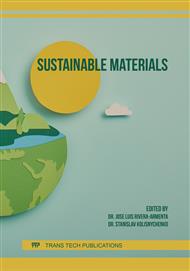p.3
p.15
p.25
p.34
p.44
p.58
p.70
p.79
Evaluation of the Performance of the Composite Bamboo Yacht Material
Abstract:
Most of the yachts are comprised of fiberglass reinforced plastics composite materials. This material is expensive and difficult to deal with (It is difficult to burn, and not easy to destroy, more cannot be recycled), the internationally known as field-fill. People accumulation and landfill disposal the old takes up a lot of land resources. Therefore, it is necessary to develop a low cost, recyclable and environmentally friendly yacht to replace the current large number of fiberglass reinforced plastics yachts. The purpose of this study was to explore the advantages of the composite bamboo yacht material as a more cost-effective, sustainable alternative. Applying the theory of the deformation of laminated beam, this study tested a prediction model of the composite bamboo yacht material's the modulus of elasticity values. The prediction model accurately calculated the end product's the modulus of elasticity values according to the single bamboo board's the modulus of elasticity values and its assembling manner, without destroying the material's basic structure and integrity. In sum, the main physical and mechanical properties of the composite bamboo yacht material are obviously beyond regular fiberglass reinforced plastics yacht material. The transverse mechanical properties were obviously enhanced by using the advantage of unidirectional alkali free glass fiber plain cloth and improving the assembly manner. Only 10% of the current market cost at time of publication, a renewable, many environmental advantages, radically has enormous market potential to replace regular fiberglass reinforced plastics yacht material.
Info:
Periodical:
Pages:
34-43
Citation:
Online since:
March 2020
Authors:
Price:
Сopyright:
© 2020 Trans Tech Publications Ltd. All Rights Reserved
Share:
Citation:



